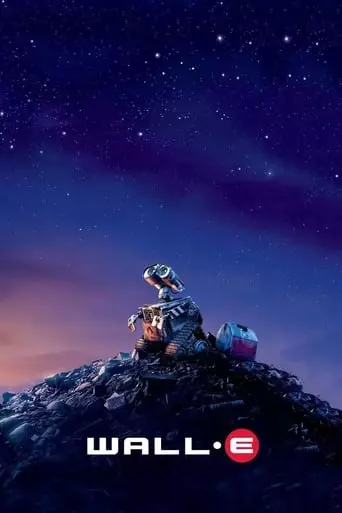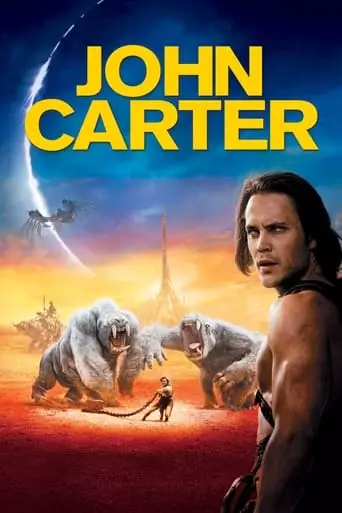Dory is reunited with her friends Nemo and Marlin in the search for answers about her past. What can she remember? Who are her parents? And where did she learn […]

Dory is reunited with her friends Nemo and Marlin in the search for answers about her past. What can she remember? Who are her parents? And where did she learn […]

On behalf of oppressed bugs everywhere, an inventive ant named Flik hires a troupe of warrior bugs to defend his bustling colony from a horde of freeloading grasshoppers led by […]

What if mankind had to leave Earth and somebody forgot to turn the last robot off? After hundreds of years doing what he was built for, WALL•E discovers a new […]

John Carter is a war-weary, former military captain who’s inexplicably transported to the mysterious and exotic planet of Barsoom (Mars) and reluctantly becomes embroiled in an epic conflict. It’s a […]

Nemo, an adventurous young clownfish, is unexpectedly taken from his Great Barrier Reef home to a dentist’s office aquarium. It’s up to his worrisome father Marlin and a friendly but […]
Andrew Stanton: A Master Storyteller in Animation and Beyond
Andrew Stanton is an acclaimed American filmmaker, screenwriter, and producer whose work has shaped some of the most beloved animated films of all time. As a key creative force at Pixar Animation Studios, Stanton directed iconic films like Finding Nemo (2003), WALL-E (2008), and Finding Dory (2016). His storytelling prowess extends to live-action cinema, as demonstrated by his ambitious adaptation of John Carter (2012). With a career defined by innovation, emotional depth, and visual storytelling, Stanton has left an indelible mark on the world of cinema.
Early Life and Path to Pixar
Born on December 3, 1965, in Rockport, Massachusetts, Andrew Stanton developed an early passion for storytelling and animation. He graduated from the California Institute of the Arts (CalArts) with a degree in character animation, joining a wave of talented artists who would go on to revolutionize the industry.
Stanton joined Pixar in its early days, becoming one of the studio’s first employees. He contributed to the company’s groundbreaking short films, including Luxo Jr. and Tin Toy, which showcased Pixar’s pioneering work in computer animation.
Breakthrough with Toy Story
Stanton co-wrote Pixar’s first feature film, Toy Story (1995), which became a critical and commercial sensation.
Innovation: The film was the first fully computer-animated feature, blending cutting-edge technology with heartfelt storytelling.
Legacy: Stanton’s work on Toy Story established his reputation as a master storyteller, laying the foundation for his directorial career.
He continued to contribute as a writer to subsequent Pixar hits, including A Bug’s Life (1998), Toy Story 2 (1999), and Monsters, Inc. (2001).
Directorial Debut: Finding Nemo
In 2003, Stanton made his directorial debut with Finding Nemo, a visually stunning and emotionally resonant underwater adventure.
Plot: The film follows Marlin, a clownfish searching for his son Nemo, who has been captured by divers. Along the way, Marlin forms an unlikely partnership with the forgetful yet endearing Dory.
Themes: Finding Nemo explores themes of parental love, courage, and letting go.
Accolades: The film won the Academy Award for Best Animated Feature and became one of the highest-grossing animated films of all time.
WALL-E: A Bold and Visionary Film
Stanton’s next directorial effort, WALL-E (2008), pushed the boundaries of animated storytelling.
Plot: Set in a dystopian future, the film follows a waste-collecting robot named WALL-E who embarks on a journey that could save humanity.
Innovative Storytelling: The film’s first act is nearly dialogue-free, relying on visual storytelling and sound design to convey emotion and narrative.
Critical Acclaim: WALL-E received widespread praise for its environmental themes, artistry, and emotional depth, earning Stanton his second Academy Award for Best Animated Feature.
Transition to Live-Action: John Carter
In 2012, Stanton directed his first live-action film, John Carter, based on Edgar Rice Burroughs’ Barsoom series.
Plot: The film tells the story of a Civil War veteran who is transported to Mars, where he becomes embroiled in a conflict between warring factions.
Challenges: Despite its ambitious scope and innovative visual effects, John Carter struggled at the box office and received mixed reviews.
Legacy: While commercially unsuccessful, the film has since gained a cult following and is appreciated for its bold vision.
Return to Animation: Finding Dory
Stanton returned to animation with Finding Dory (2016), a sequel to Finding Nemo.
Plot: The film focuses on Dory’s quest to reunite with her long-lost family, exploring themes of identity and belonging.
Success: Finding Dory became a critical and commercial hit, grossing over $1 billion worldwide.
Hallmarks of Andrew Stanton’s Filmmaking
Stanton’s films are characterized by their emotional depth, innovative storytelling, and universal appeal.
Emotional Resonance: Stanton excels at creating stories that resonate with audiences on a deeply personal level, often exploring themes of love, identity, and perseverance.
Visual Storytelling: His background in animation allows him to craft narratives that rely heavily on visual cues, making his films accessible and engaging.
Ambition: Whether in animation or live-action, Stanton is unafraid to take creative risks, pushing the boundaries of storytelling and technology.
Influence and Legacy
Andrew Stanton’s contributions to animation have had a profound impact on the industry.
Pixar’s Success: As one of Pixar’s key creative voices, Stanton has been instrumental in shaping the studio’s identity and success.
Inspiring Filmmakers: His work has inspired a new generation of storytellers, demonstrating the power of animation to tackle complex themes and emotions.
Future Projects
Stanton continues to explore new storytelling avenues, including television and live-action projects. His commitment to innovation and emotional storytelling ensures that his future work will be as impactful as his past achievements.
Conclusion
Andrew Stanton’s career is a testament to the transformative power of storytelling. From the underwater wonders of Finding Nemo to the poignant brilliance of WALL-E, Stanton has created films that entertain, inspire, and resonate with audiences around the world. As he continues to push the boundaries of cinema, his legacy as a master storyteller remains firmly established.